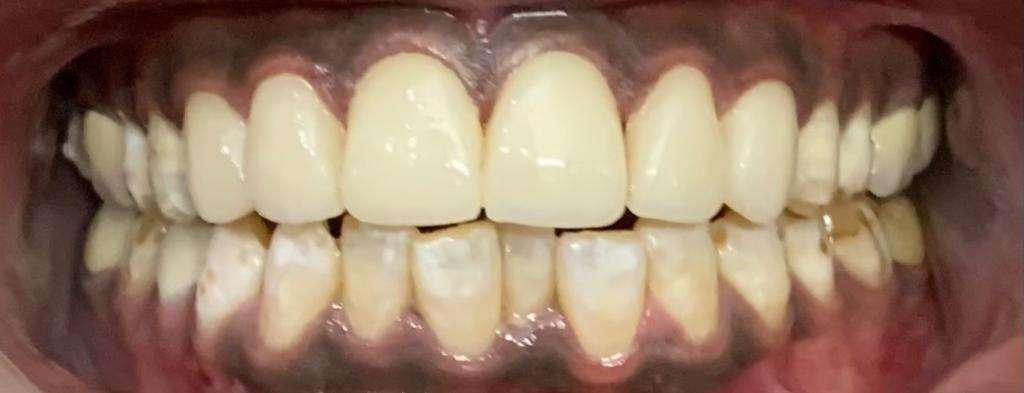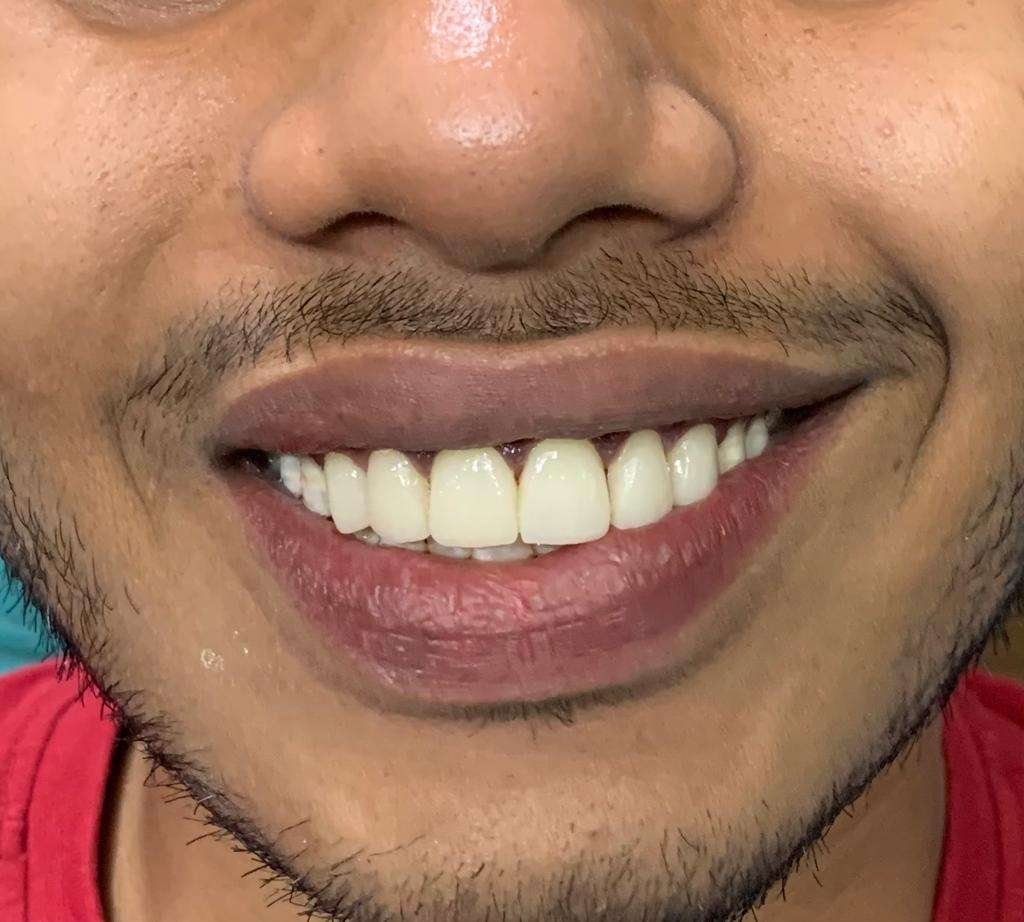- +91-9039475251 || +91-9244125686
- 10:30 AM to 7:30 PM
Dental Case Study 1
Dental Case Study 1- E-max Veneer for Dental Fluorosis
Patient Information
- Name : Rudraksh Goud
- Age: 20
- Gender : Male
- Date of Presentatio : 25/04/2021
- Dentist : Dr. Gopal Singh Thakur
Before Images Veneer for Dental Fluorosis






After Images Veneer for Dental Fluorosis
The patient, a young man, presented to the clinic with a chief complaint of yellowish discoloration of his teeth which he has been experiencing since childhood.
Medical History: The patient has no significant medical history. No allergies or ongoing medical conditions were reported.
The patient reported that the yellowish discoloration of his teeth had been present since childhood. He had been concerned about the appearance of his teeth and sought professional dental help.
Upon clinical examination, it was observed that the patient’s teeth displayed varying degrees of yellowish discoloration. The enamel of the affected teeth appeared to have a mottled appearance, with chalky spots present on some teeth. The discoloration was particularly pronounced on the permanent teeth, which had erupted after the age of 6 years.
The patient was diagnosed with dental fluorosis, a condition caused by excessive fluoride intake during the developmental stage of teeth formation. The excessive fluoride consumption led to the replacement of calcium ions in the tooth enamel with fluoride ions, resulting in yellow to reddish discoloration.
The excess fluoride exposure was attributed to the patient’s consumption of fluoride-contaminated drinking water and food supplements. Dental fluorosis typically develops between the ages of 1 and 5 years, affecting permanent teeth that erupt after age 6. The patient’s condition resulted from his exposure to excessive fluoride during this critical developmental period.
To prevent dental fluorosis, patients should be advised to avoid excess fluoride in drinking water, diet, and toothpaste. Educating patients and caregivers about appropriate fluoride intake and sources can significantly reduce the risk of developing this condition.
Dental fluorosis weakens the tooth structure, rendering the affected teeth more susceptible to dental caries. Additionally, the unhealthy yellow appearance of the teeth can lead to aesthetic concerns and lowered self-confidence in affected individuals.
Treatment
For teeth with mild to moderate dental fluorosis, bleaching was suggested to improve the appearance of the teeth and reduce discoloration. Carious teeth were also identified during the examination and required restoration.
However, in cases where the severity of dental fluorosis was more pronounced, the treatment of choice was the placement of E-max or composite veneers on the affected teeth. E-max veneers are known for their superior aesthetics and strength, making them suitable for addressing dental fluorosis’s aesthetic and functional concerns.
Treatment Plan
- Comprehensive oral hygiene instructions and dietary recommendations to prevent further enamel damage.
- Bleaching for mildly affected teeth to improve discoloration.
- Restoration of carious teeth using appropriate restorative materials.
- For severe cases, treatment with E-max veneers enhances the aesthetic appearance of the teeth.
Outcome
The patient agreed to undergo treatment with E-max veneers to address the aesthetic concerns related to his dental fluorosis. The treatment plan was explained in detail, and the patient expressed understanding and consent.
Follow-up
Regular follow-up appointments were scheduled to monitor the treatment’s progress, assess the veneer’s condition, and provide necessary adjustments or maintenance.
Conclusion
This case highlights the diagnosis and management of dental fluorosis, a condition caused by excessive fluoride exposure during tooth development. E-max veneers were chosen as an effective treatment option to improve the aesthetic appearance of the teeth and restore the patient’s self-confidence.
